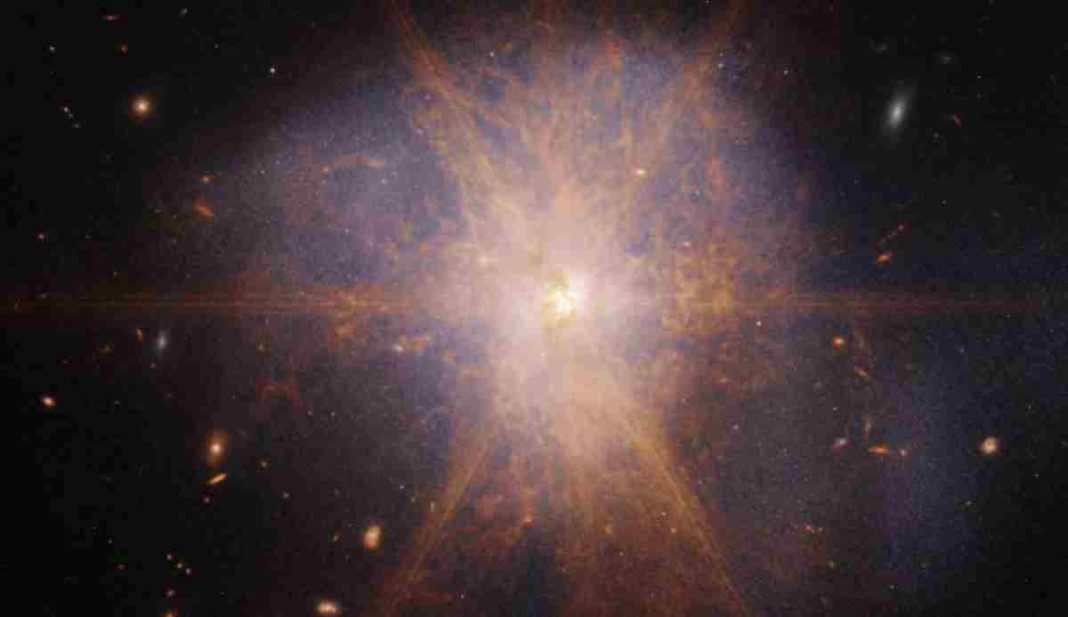UNITED STATES: NASA has shared a stunning image of a galaxy that shines brighter than the light of a trillion suns. The image was captured by NASA’s James Webb Space Telescope, and it shows a “snowflake-like” object with a bright white core and eight pinkish-orange spikes. This so-called “snowflake” is actually two galaxies that are colliding and merging.
Arp 220 is a galaxy that may be found in the Serpens constellation, 250 million light-years away. With a total brilliance of more than a trillion suns, it is actually two spiral galaxies that are merging. In contrast, the illumination of our Milky Way galaxy is much more modest—roughly the equivalent of ten billion suns.
The closest of the three galactic mergers closest to Earth, Arp 220, is the brightest and nearest ULIRG (ultra-luminous infrared galaxy). The Atlas of Peculiar Galaxies by Halton Arp lists it as the 220th item.
According to NASA, this galactic collision, which started around 700 million years ago, caused a massive explosion of star creation. Webb’s infrared vision allows it to see through the dust that obscures the star formation’s light.
With its Mid-Infrared Instrument (MIRI) and Near-Infrared Camera (NIRCam), the James Webb Space Telescope saw Arp 220. These devices enable the telescope to take sharp pictures of the galaxy by allowing it to see through the dust.
The image that Webb captured is not only beautiful but also useful scientifically. By studying galaxies like Arp 220, astronomers can learn more about the processes that drive galaxy formation and evolution.
The collision of two galaxies can cause a massive burst of star formation, as seen in Arp 220. This star formation can also trigger the growth of supermassive black holes at the center of galaxies. By studying the properties of these black holes, astronomers can learn more about the evolution of galaxies over time.
In summary, the image of Arp 220 captured by NASA’s Webb Telescope is a remarkable sight that showcases the beauty and complexity of the universe. It also provides valuable scientific insights into the processes that drive galaxy formation and evolution. The launch of the James Webb Space Telescope later this year is eagerly anticipated, and we can’t wait to see what new discoveries it will uncover.
Also Read: NASA’s IXPE Satellite Produces Detailed Map of Magnetic Fields in Crab Nebula



